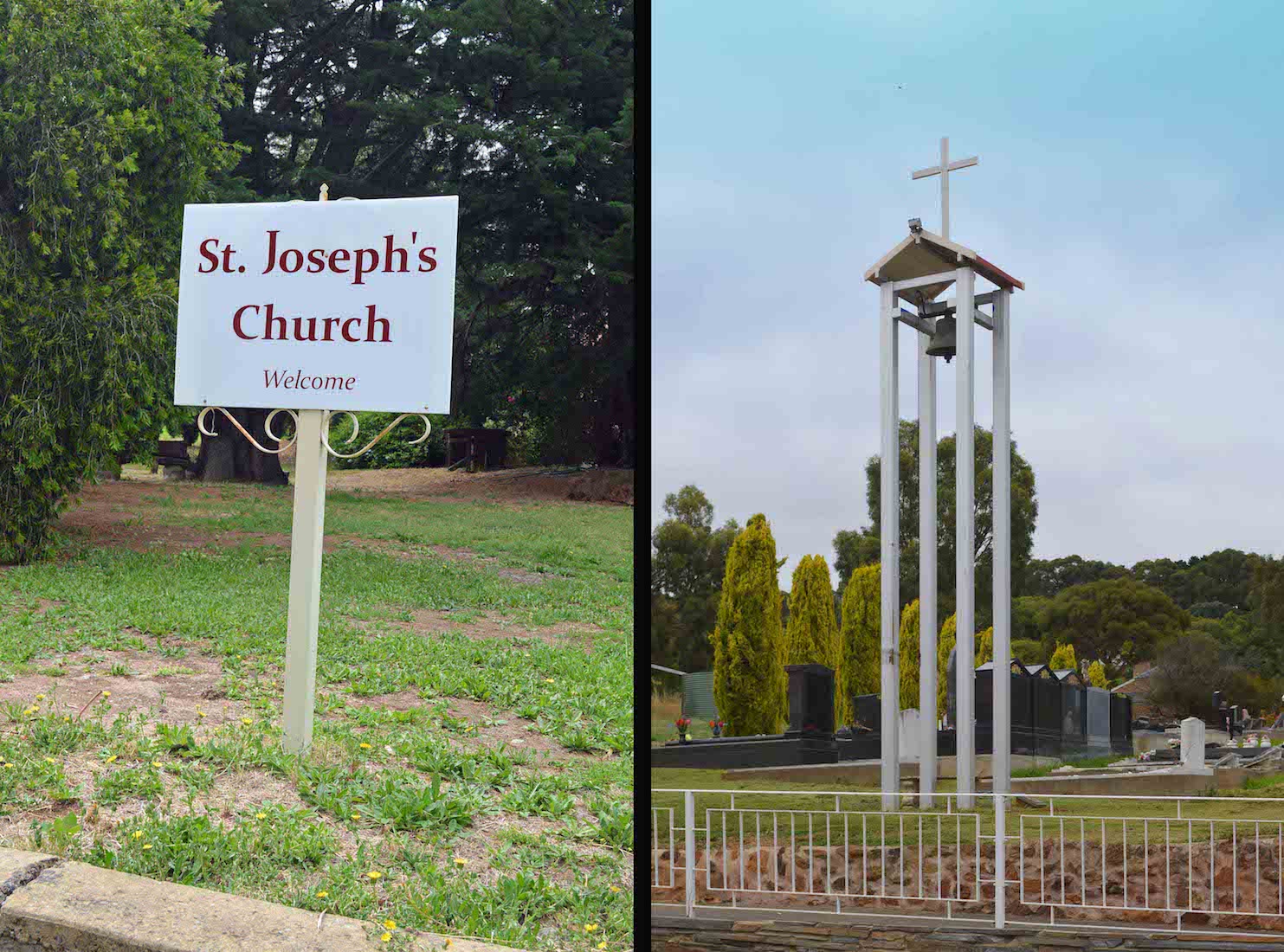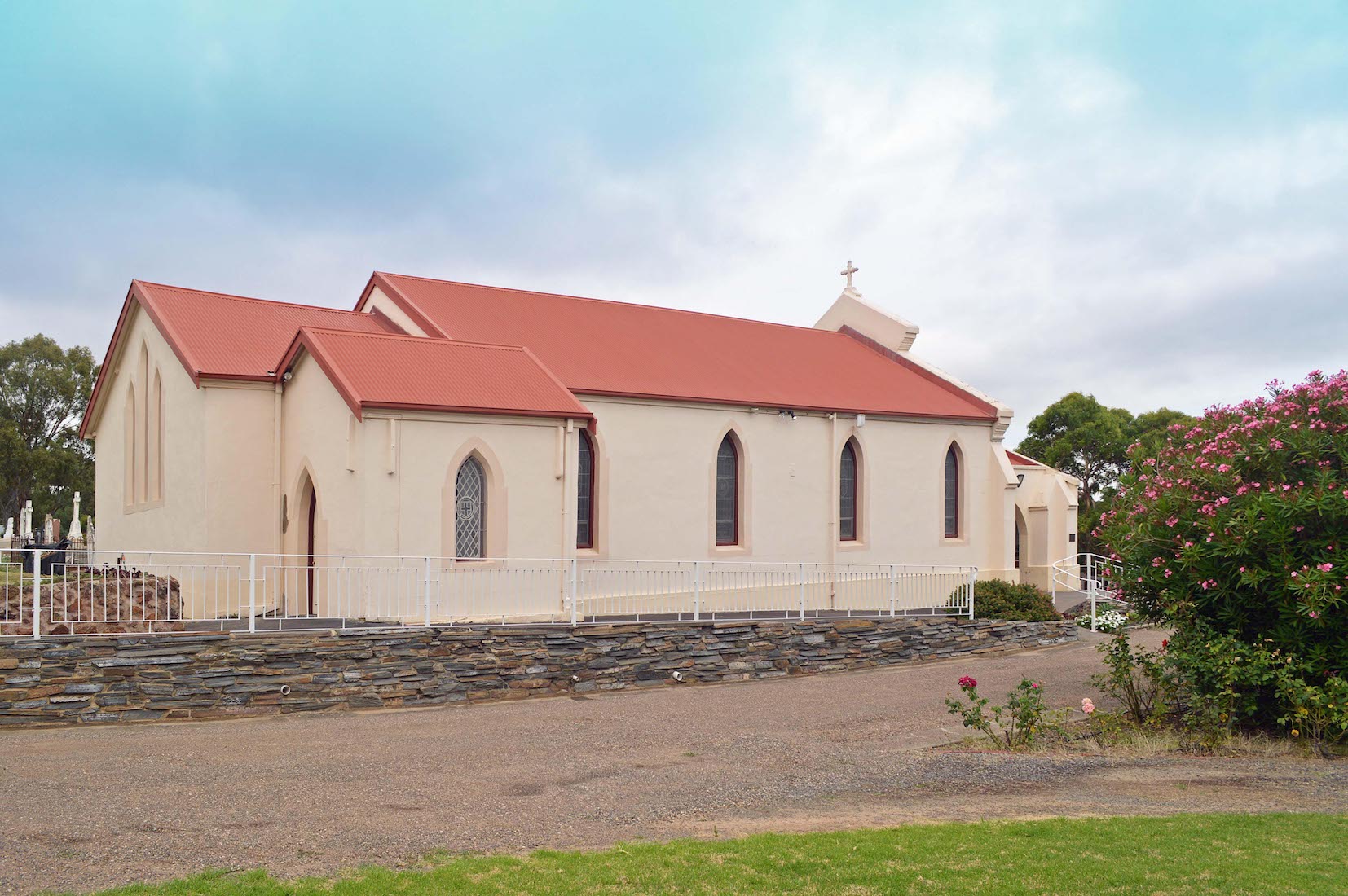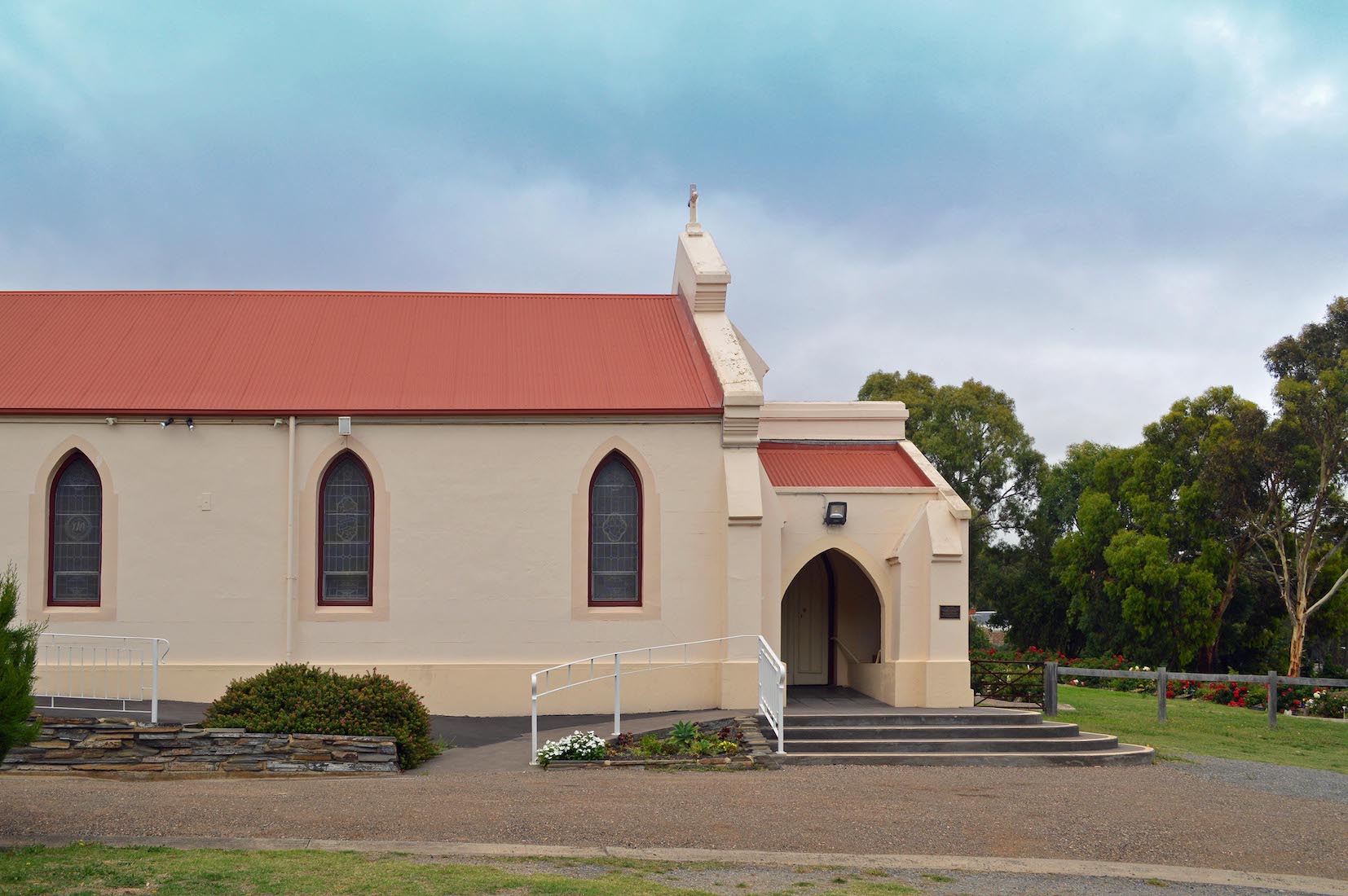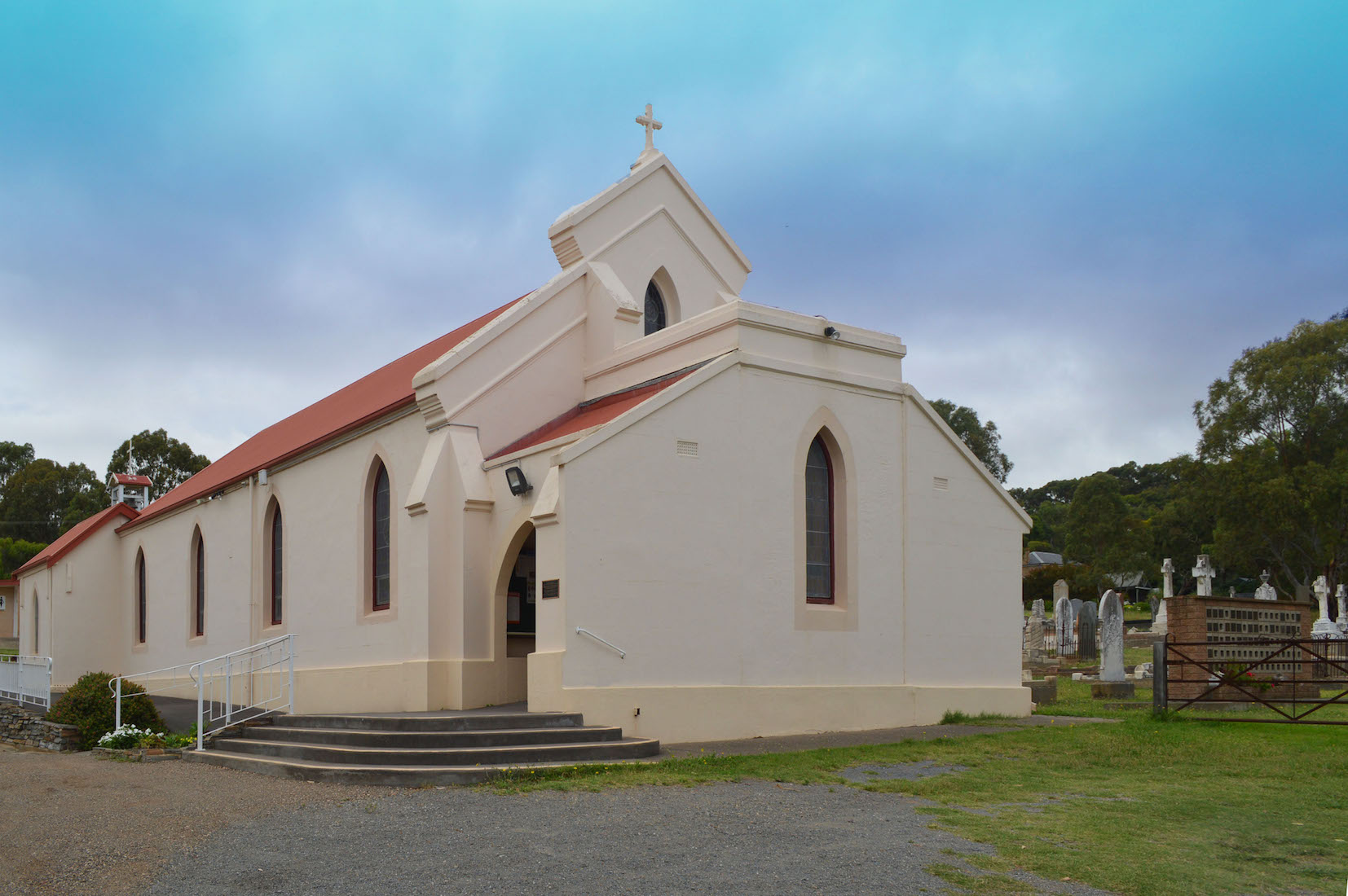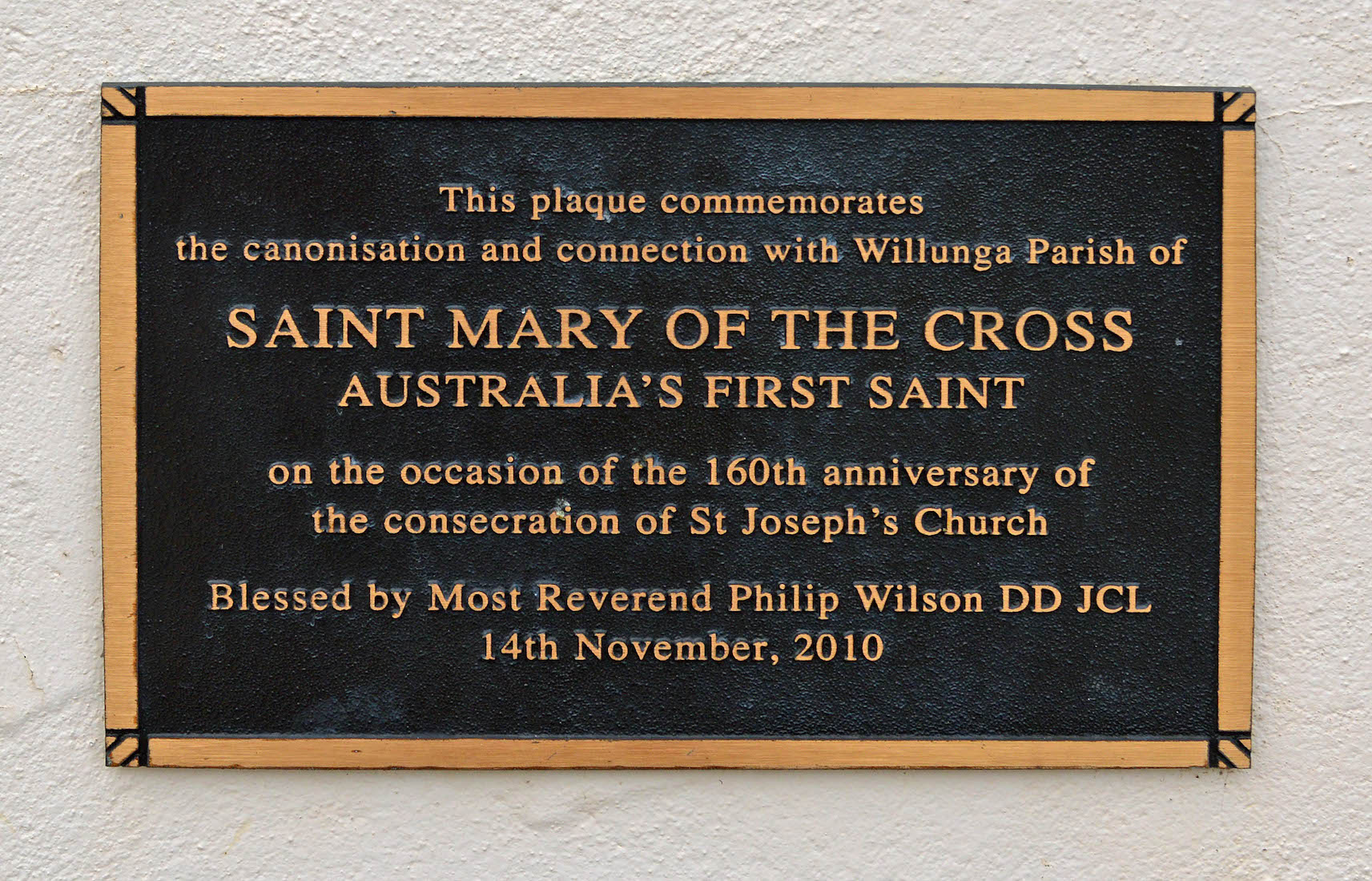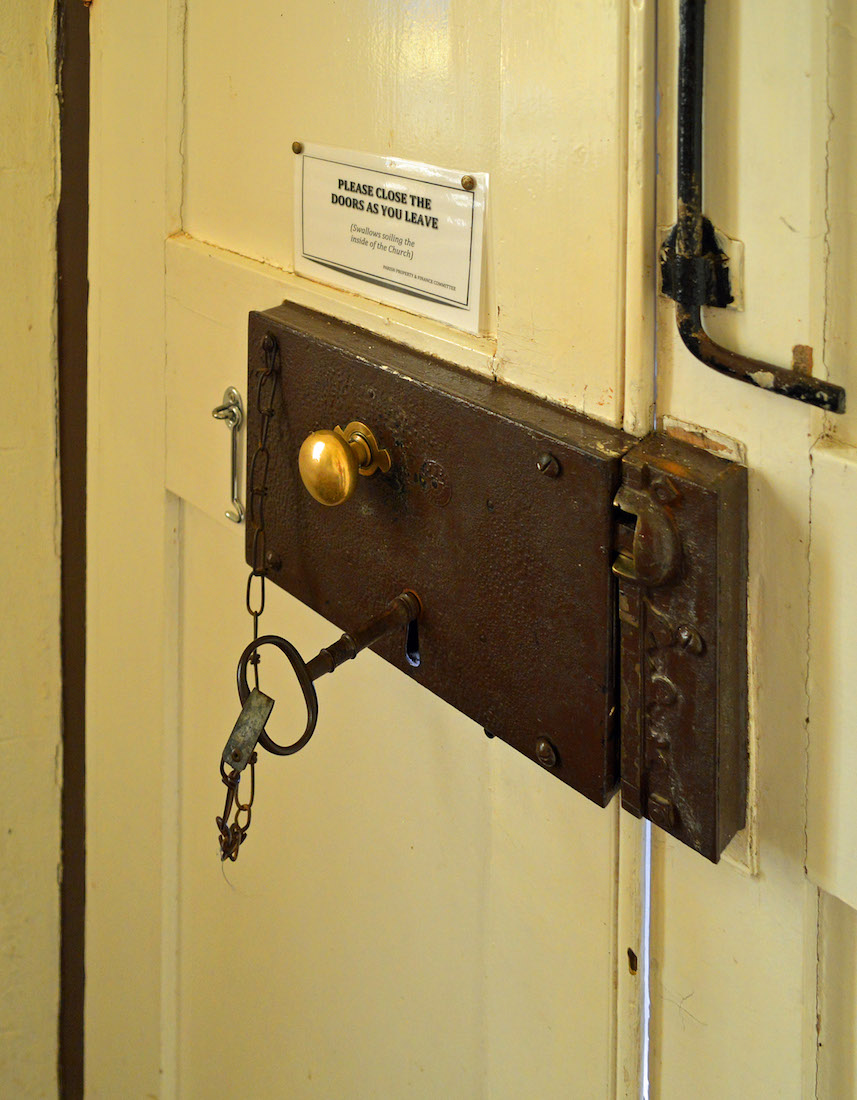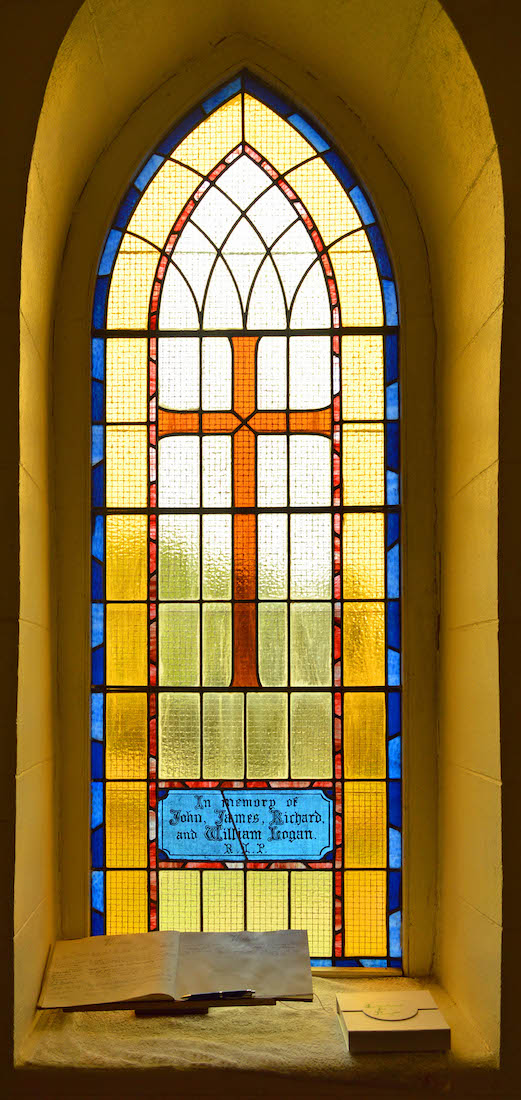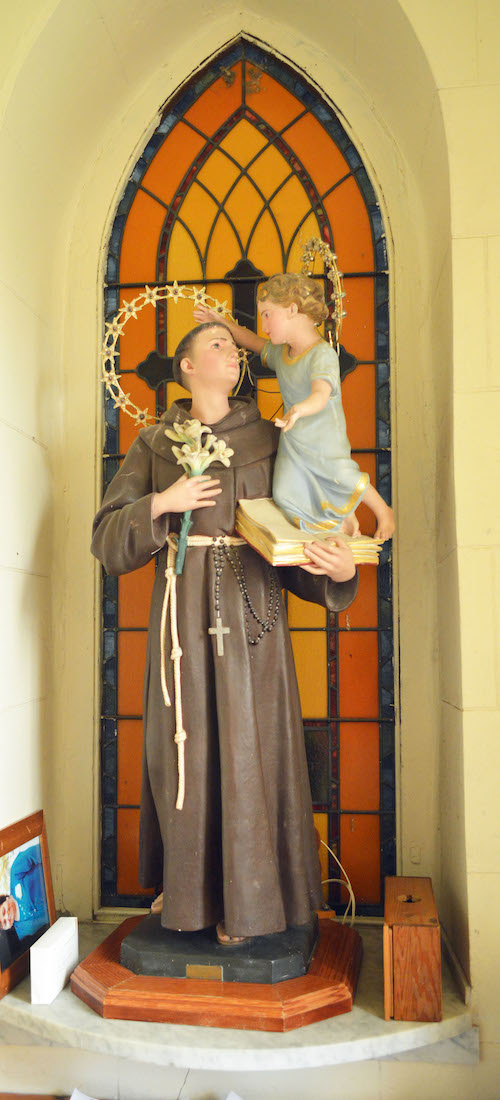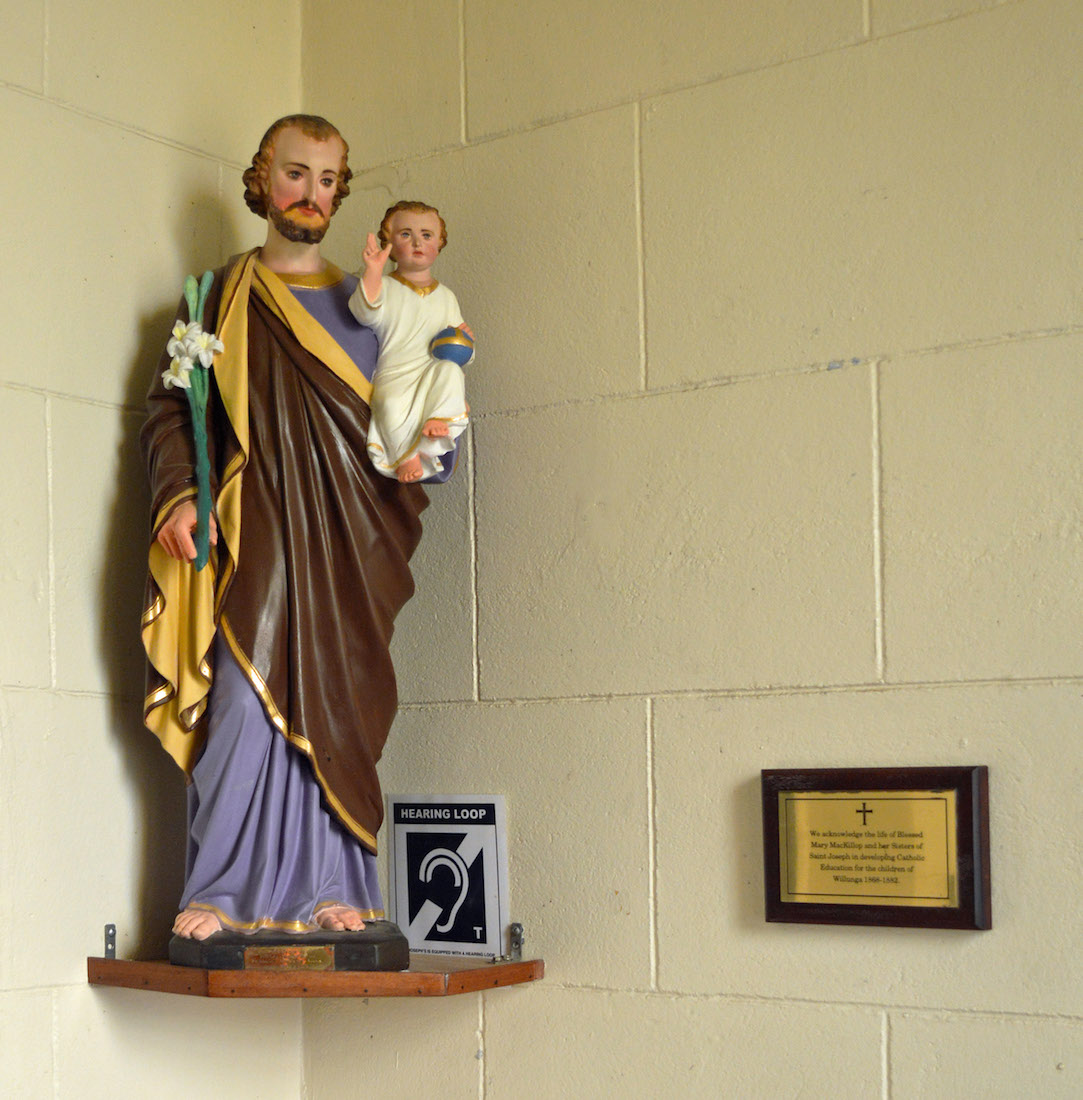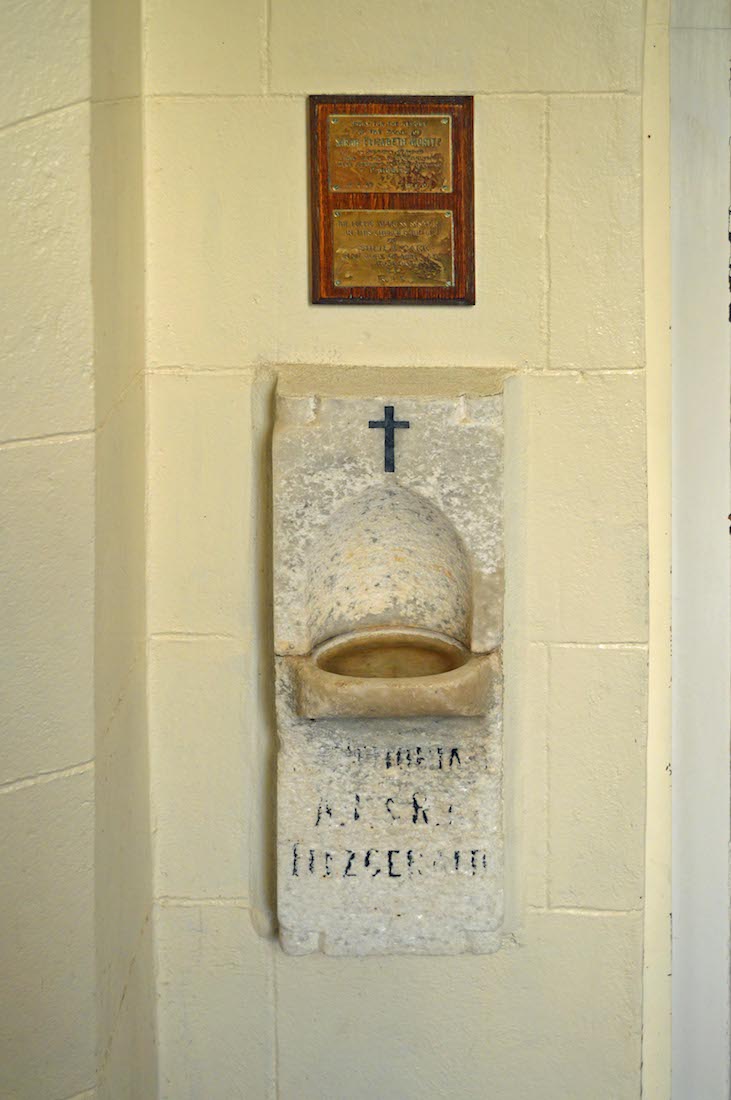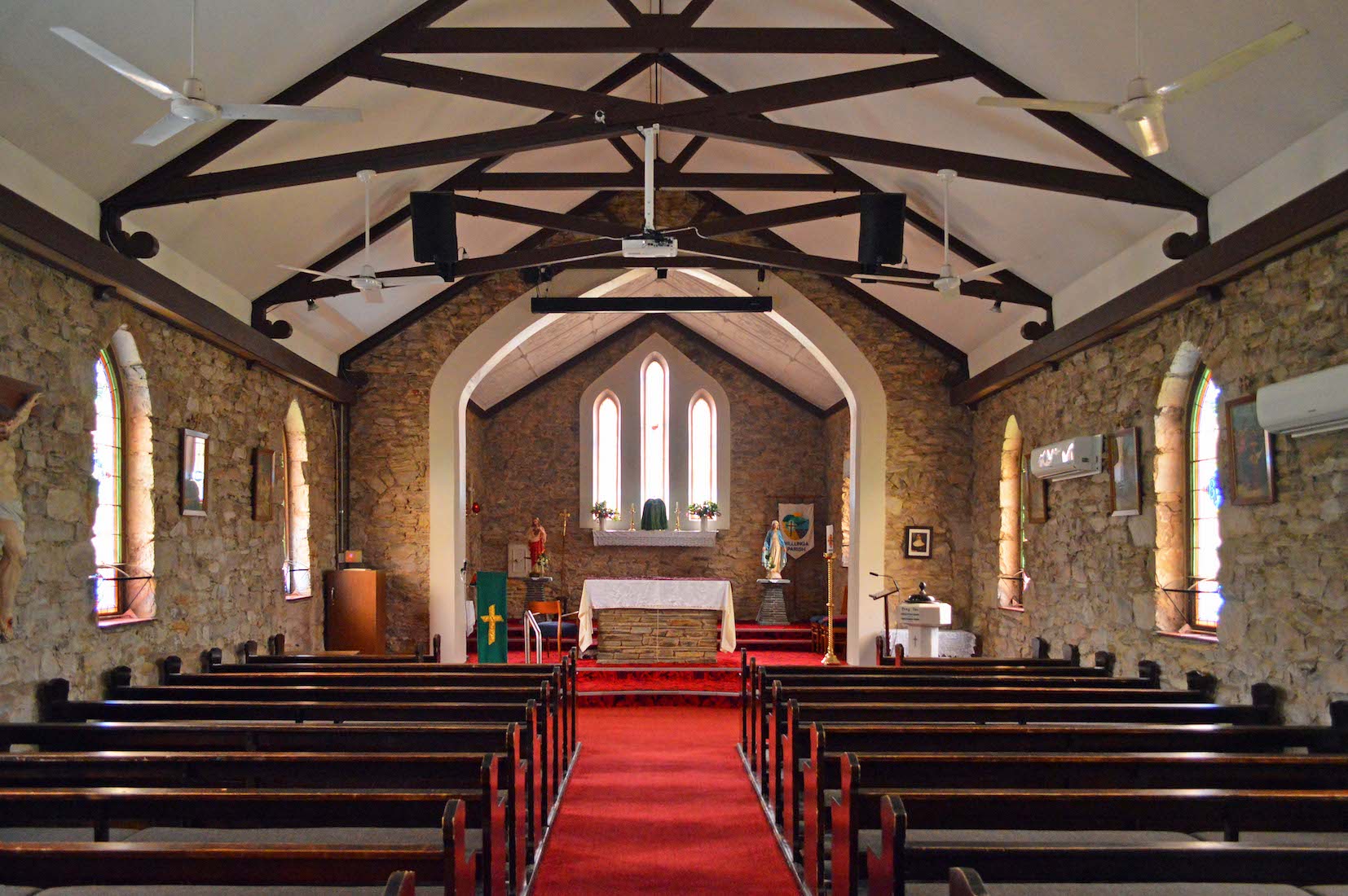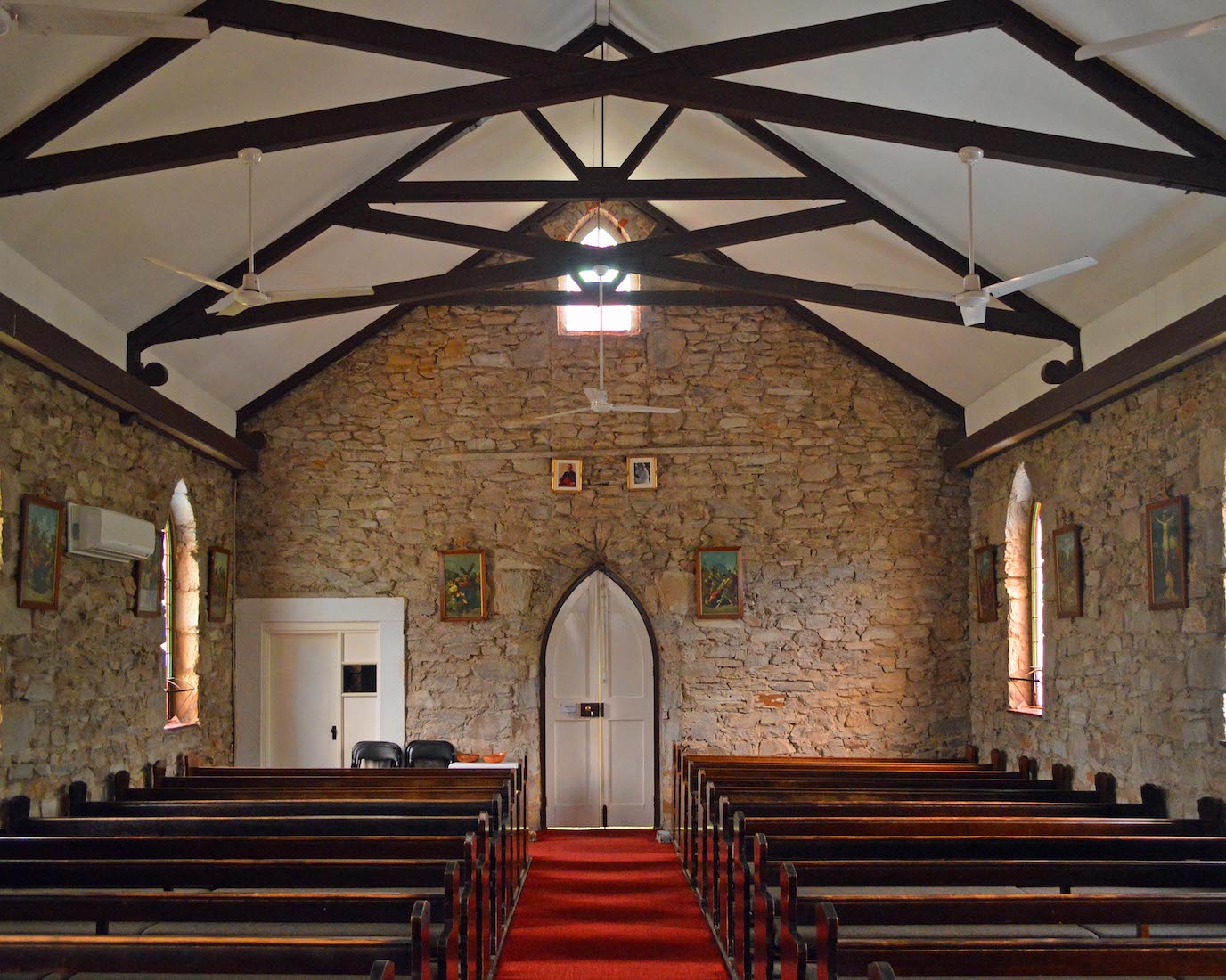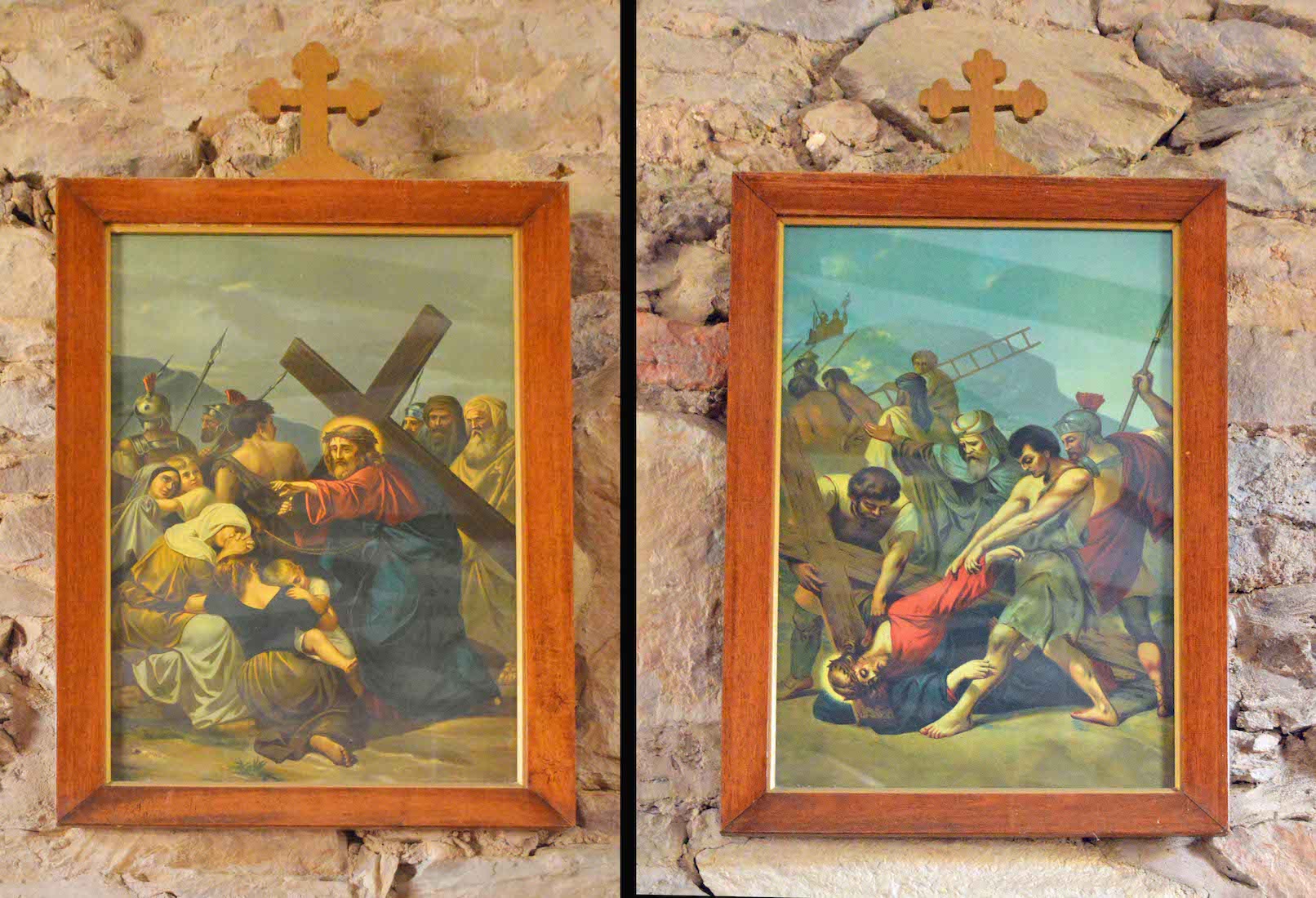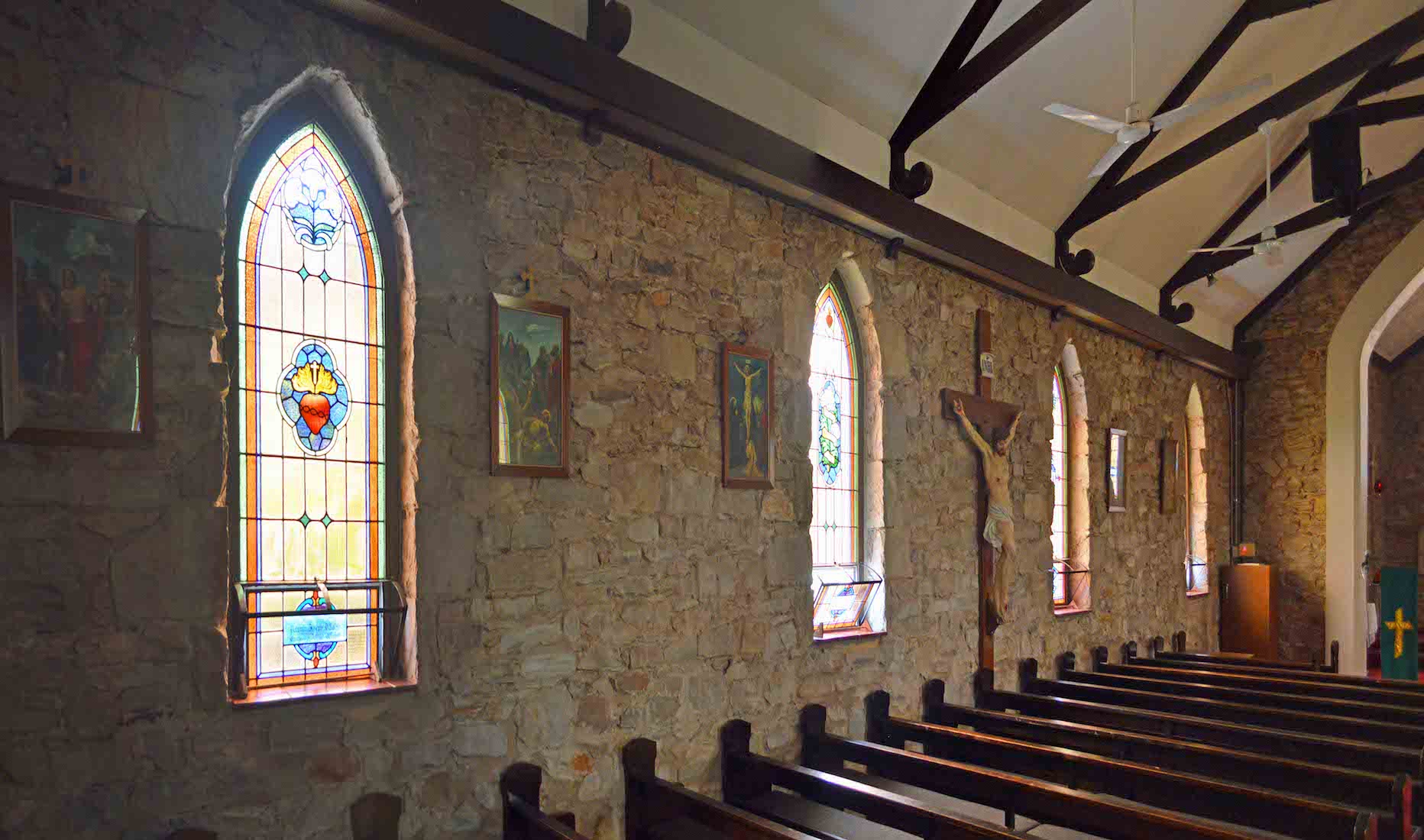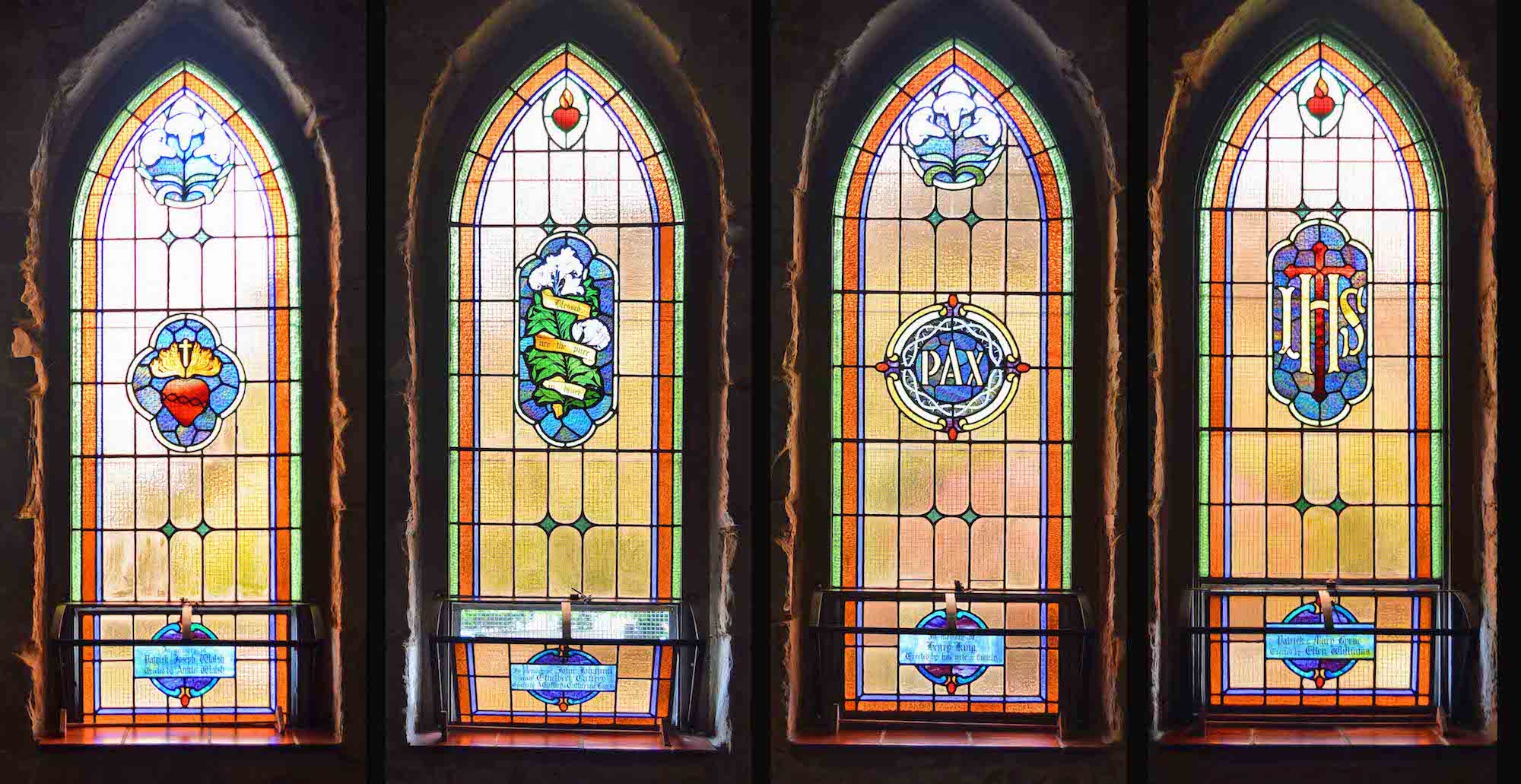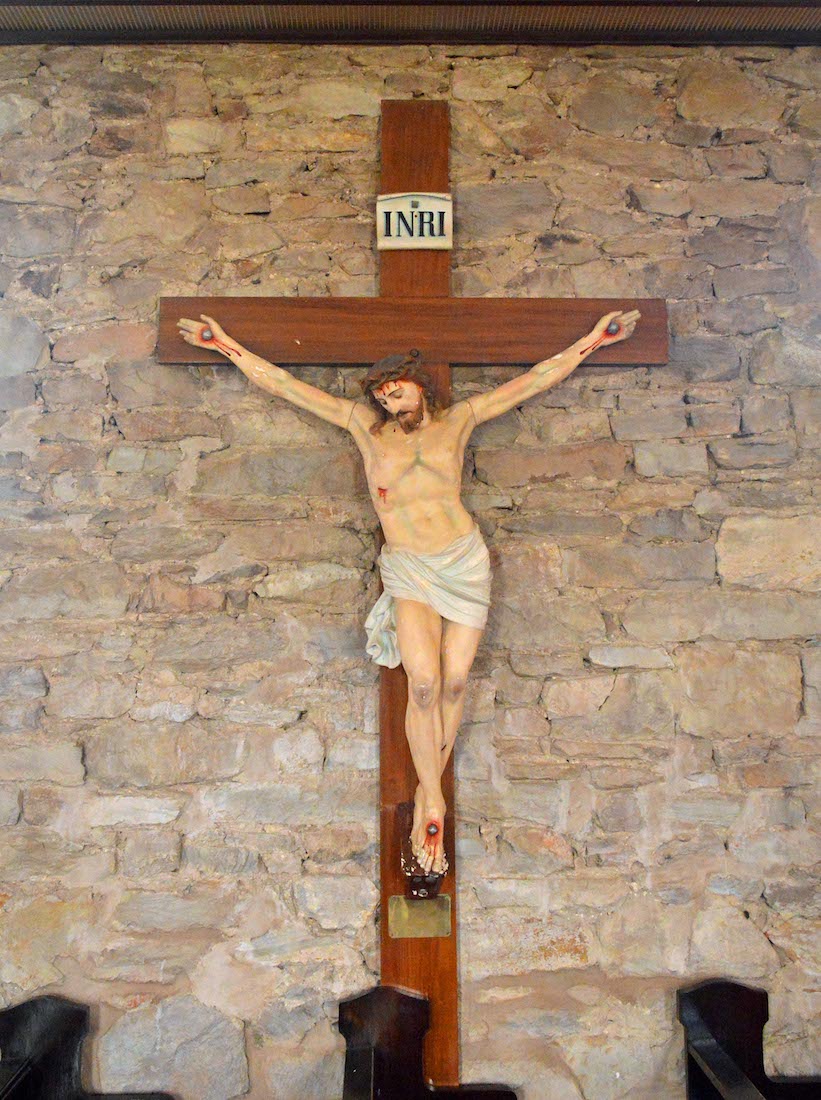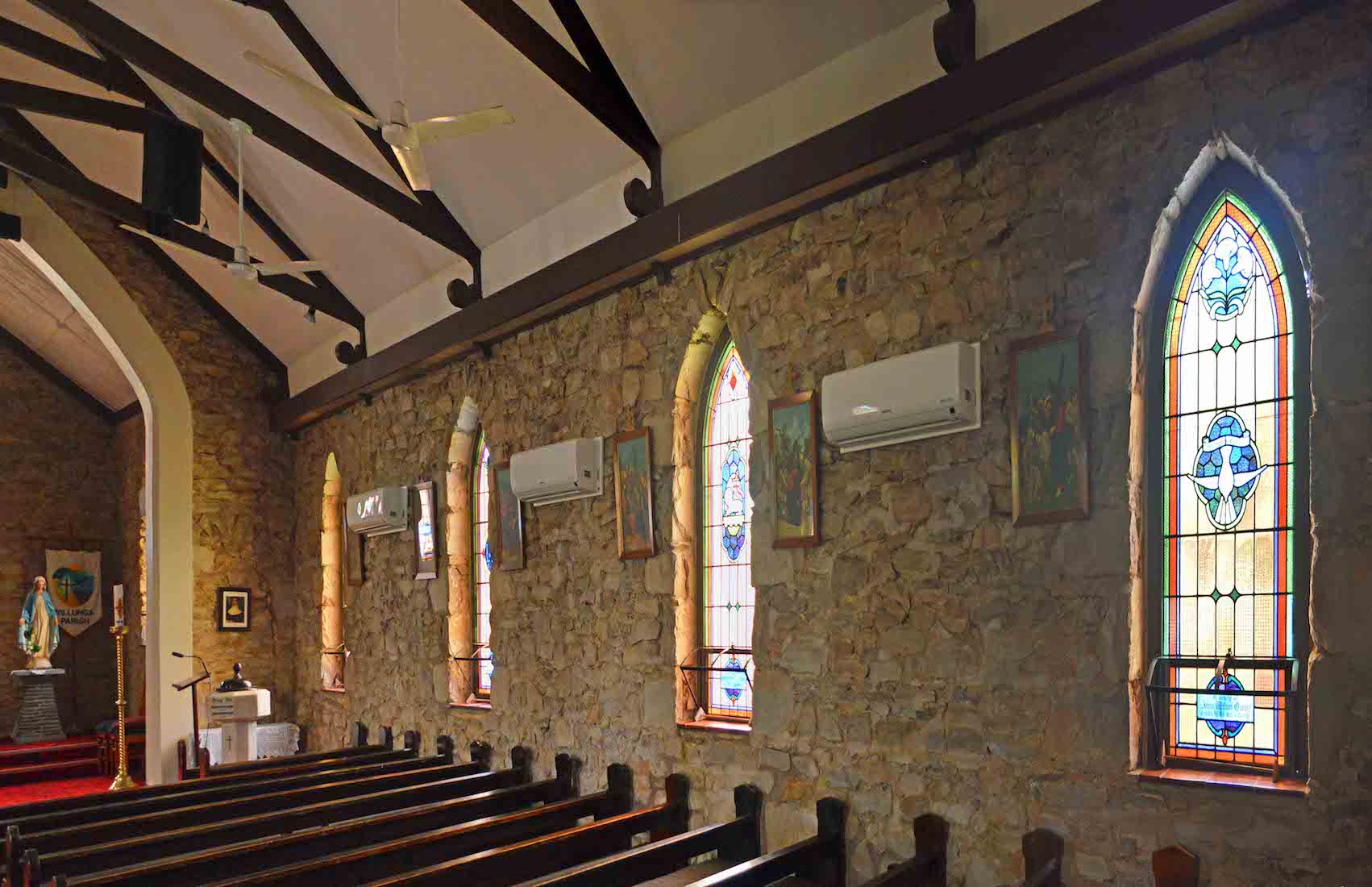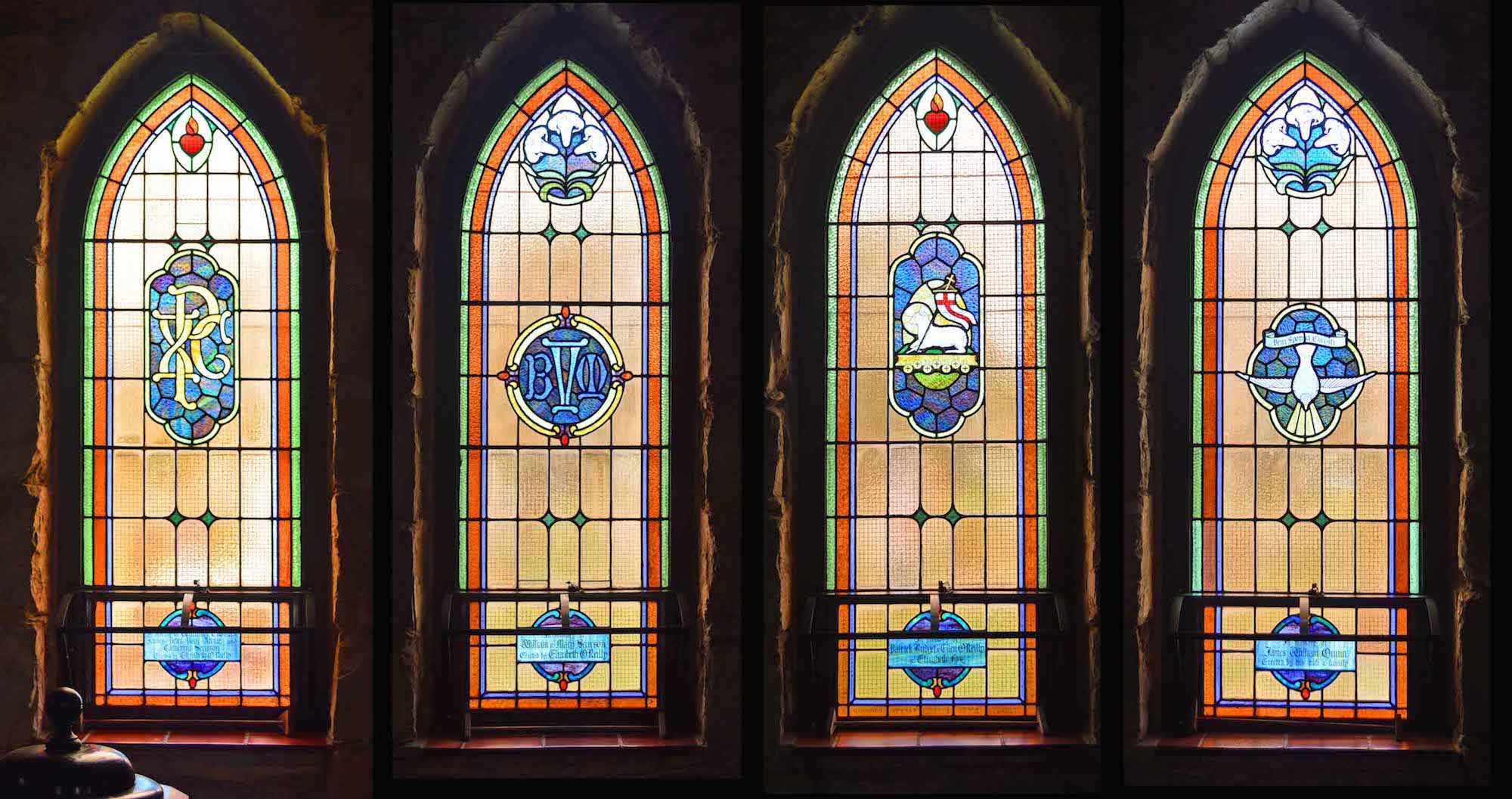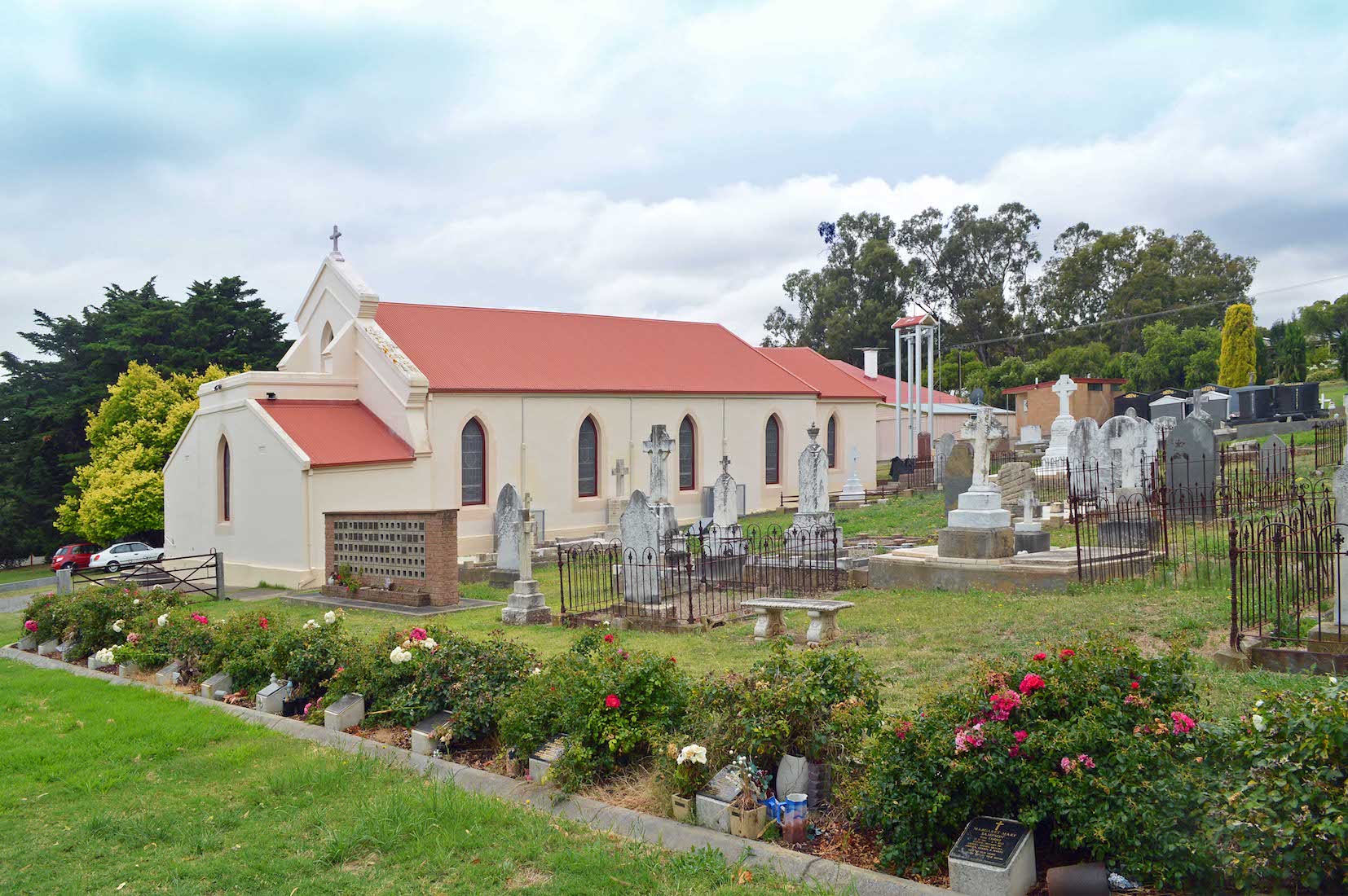
St Joseph's Church on St Jude’s Street, Willunga was established in 1850. It was the third Catholic Church in South Australia and is the oldest still in continuous use. The best view is probably here, from the south, across the adjacent cemetery! INDEX
2. SATELLITE VIEW
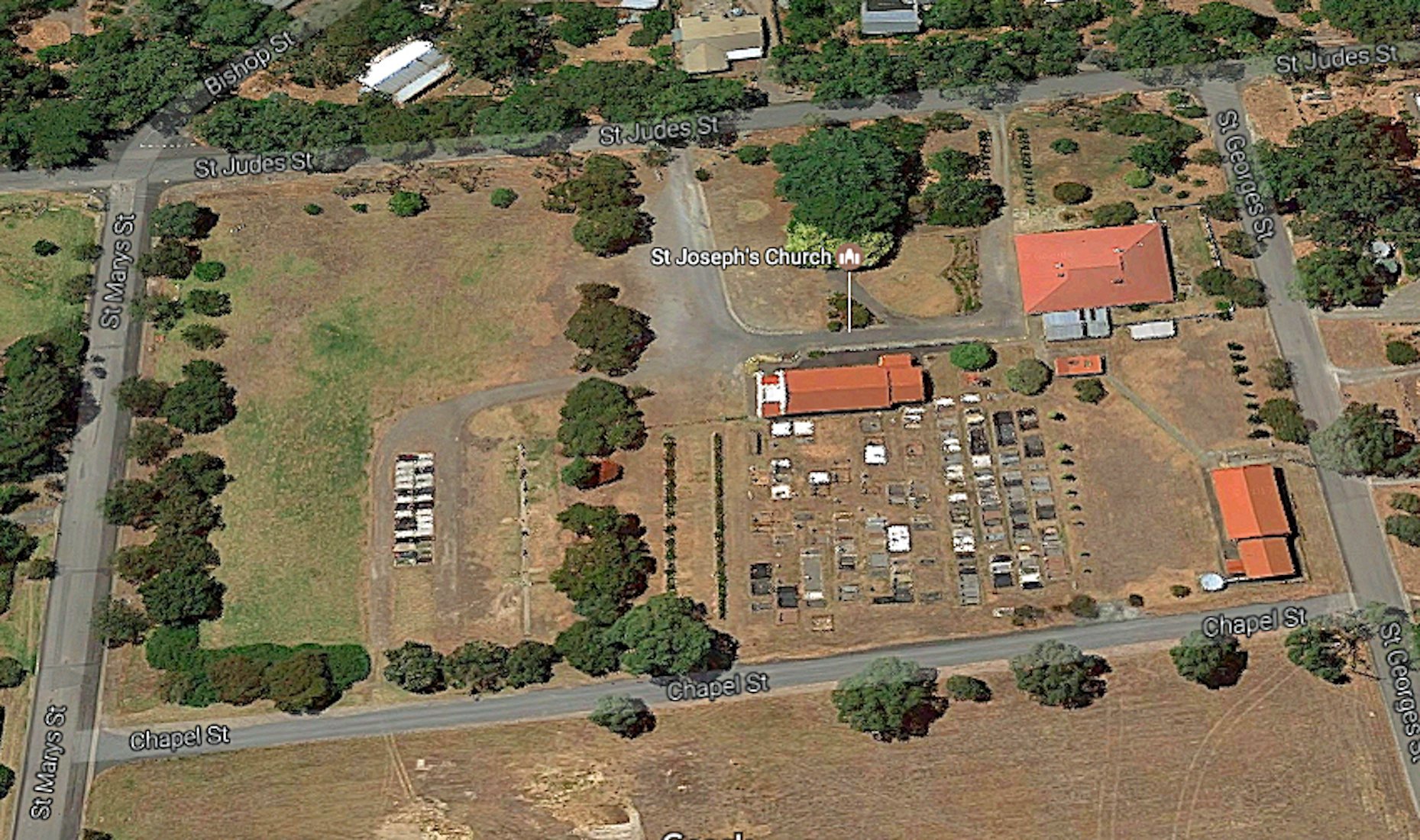
The satellite view shows the Church with its large allotment of land. The building itself is essentially rectangular with a lengthwise gable roof. The entry porch and sanctuary are slightly smaller in dimension, and a vestry is attached to the north of the sanctuary. The axis of the Church is close to geographical east – west, so our liturgical East (with a capital E) is almost identical with geographical east.
3. SIGN AND BELL TOWER
The bell tower is close to the East end of the Church, and the brief sign faces out by the St Judes Street entrance. The street naming around here is very ecclesiastical: Chapel St, Church St, Kirk St, St Mary’s St, St George’s St, Bishop St, St Andrew’s Tce, Methodist St, ... !
4. NORTHEAST VIEW
In April 1845 Bishop Murphy celebrated the First Mass in Willunga (probably in a private home) and returned in 1847 to help organise the building of a church. A collection was taken up which realised £72/10/- and the decision was made to build a church. Fr Michael O'Brien was appointed, but never resided in the parish. When visiting he stayed with a Mr Martin and Mass was celebrated in the Martin house. An architect, Mr Weir, was engaged and plans were drawn up for the church.
5. NORTH WALL AND PORCH
The total cost of building was estimated at £350 – for a skeleton building only. The proposed dimensions were 48' x 28' x 12'. Preparations began and the foundation stone laid on March 16, 1846. On the same day, foundations were laid for the cottage presbytery. By 1850 the skeleton building was erected and on May 5, 1850 it was consecrated and opened.
6. NORTHWEST VIEW
A grant of twenty acres of glebe land was received in October 1850. Glebe land grants were provided by the colonial government for interment of the dead and as a site for a dwelling and garden for ministers of religion. Provision of glebe land grants for the various denominations was seen as a way of creating cohesive communities and orderly townships.
7. PLAQUE
By the North door of the porch is a plaque which commemorates the canonisation and connection with the Willunga Parish of Australia’s first saint, Mary MacKillop, Saint Mary of the Cross. Mary was jointly responsible for creating the Order Sisters of St Joseph which was initially concerned for education of poor children. Schools were opened in various places including Willunga.
9. PORCH WINDOW
The single porch window depicting a Cross was given in memory of John, James, Richard and William Logan. During the establishment of St Joseph’s, Logan was a generous benefactor who was always at the disposal of the priest and church community. Sadly, during the 1860s, the Logans’ four sons died at ages 19, 20 and 21 years, all of lung diseases. A Vistors’ Book sits on the shelf beneath.
10. ST ANTHONY
In the porch we find Saint Anthony of Padua (1195 – 1231), priest and friar of the Franciscan Order. Noted by his contemporaries for his forceful preaching, expert knowledge of scripture, and undying love and devotion to the poor and the sick, he was the most-quickly canonized saint. He was proclaimed a Doctor of the Church in 1946. He is also the patron saint of lost things.
11. ST JOSEPH
Also in the porch we find the figure of Mary’s husband Joseph carrying the Infant Jesus as well as the legendary flowering staff. The brass plaque acknowledges the life of Blessed Mary MacKillop and her Sisters of Saint Joseph in developing Catholic Education for the children of Willunga 1868–1882.
12. PLAQUES AND STOUP
The top plaque remembers Sarah Elizabeth Moritz, and the lower plaque acknowledges the gift of the Church’s public address system by Sheila Carr in memory of her late husband Ed. The stoup is a container for holy water. On the lower front surface is some indecipherable text.
14. WEST WALL
The West stone wall is plain apart from two doors, and two Stations of the Cross. The walls of the nave are lined with the Stations of the Cross.
15. STATIONS OF THE CROSS
The two Stations of the Cross on the West wall are: VII Jesus falls for the second time, and VIII Jesus meets the women of Jerusalem. These Stations are framed prints. The fourteen Stations of the Cross depict the events of that final journey Jesus makes to the Cross. They are used as an aid to devotion.
16. NORTH NAVE WALL
The nave walls are simple in their decoration. On this wall there are four stained glass windows, six Stations of the Cross, and a large central Crucifix.
17. NORTH NAVE WINDOWS
These four windows have a common structural design. At top is a lily or a flaming heart. The central designs are from left: a flaming heart; a lily with text: Blessed are the pure in heart; crown of thorns with PAX text; Cross with IHS text. The windows are in memory of: Patrick Joseph Walsh; John, Johanna and Ethelbert Caffrey; Henry King.
18. CRUCIFIX
The large Crucifix has the INRI sign at the top, and an illegible plaque below the Christ figure.
19. SOUTH NAVE WALL
The South nave wall is similar to the North wall, except that there is no Crucifix hanging here.
20. SOUTH NAVE WINDOWS
The central images on these windows are from left: Unknown to me – looks like Chi-rho-C, standing for Christ? ; BVM standing for the Blessed Virgin Mary; Lamb with Banner standing for Christ the Lamb; Dove with text ‘Veni Sponsa Christi’ (Come Bride of Christ). The windows were given in memory of: James, Peter, Paul, Annie and Catherine Searson; William and Mary Searson; Patrick, Bridget and Ellen O’Reilly; James William Quinn.


